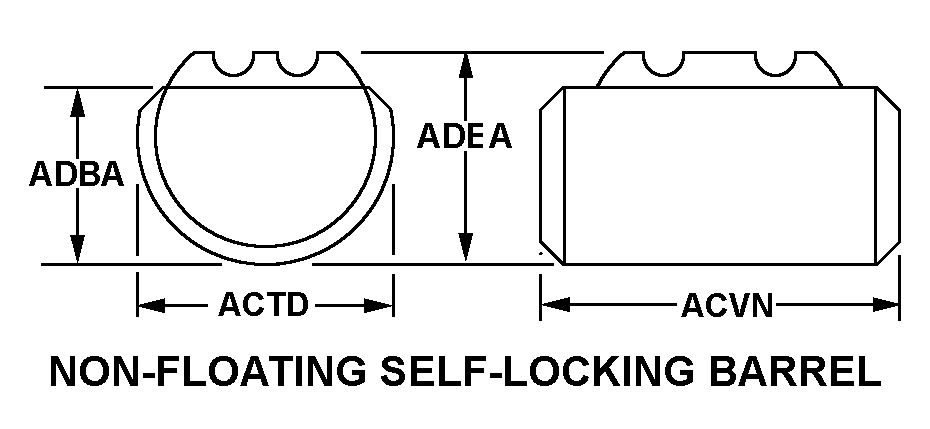5310010304034
Price Quote Get an up to date pricing and availability quote for this product. Order online or over the phone.
Quality Commitment
Serving our customers with quality and safety first.
- AS9120 Certified
- Audited supply chain
- ITAR Registered
- DDTC Registered
- HAZMAT Certified
- Customer service objectives
- Every product 100% inspected

5310-01-030-4034 Specification Set by the OEM (see RNCC code 3)
+17.026/+17.187 mm
RIGHT-Hand
prevailing torque all metal design
18.00 mm nut and 19.05 mm nut
NON-Floating SELF-Locking barrel
30.71 mm and 30.96 mm
30.710 mm and 31.210 mm
18.770 mm
24.940 mm
4.73 mm nut and 5.33 mm nut
iso m
18.0 mm
1.50
steel comp 4340 or steel comp 8740
MIL-S-5000 mil spec 1st material response or MIL-S-6049 mil spec 2nd material response
cadmium
QQ-P-416, ty 2, cl 2 fed spec single treatment response
Cross Reference Parts Part numbers that meet the specification outlined on this page and set by the OEM
Identification Item Identification Guide (IIG) and Item Name Code (INC)

Definition Definition of approved item name (AIN): "NUT,SELF-LOCKING,BARREL"
A nut of cylindrical or partly cylindrical cross-section with integral threads perpendicular to the axial centerline. Ends may be flat or flanged. An integral feature is incorporated for locking on the threads of a mating member. Excludes nut (1), self-locking, round.
5310-01-030-4034 Material Hazmat, Precious Metals, Criticality, Enviroment, and ESD
Indicates there is no data in the hmirs and the nsn is in a fsc not generally suspected of containing hazardous materials.
Precious metal content is unknown
The item does not have a nuclear hardened feature or any other critical feature such as tolerance, fit restriction or application.
Identification Codes
HMIC: Hazardous Material Indicator Code. A one position code that identifies a hazardous item.
PMIC: Precious Metal Indicator Code. A one position code which identifies items that have precious metals as part of their content. precious metals are those metals generally considered to be uncommon, highly valuable, and relatively superior in certain properties such as resistance to corrosion and electrical conductivity.
ESD: Electrostatic Discharge. Indicates if an item is susceptible to electrostatic discharge or electromagnetic interference damage. electrostatic discharge damage occurs when an accumulation of static electricity generated by the relative motion or separation of materials is released to another item by direct contact. electromagnetic interference damage occurs when an item comes into proximity with an electrostatic or magnetic field.
ENAC: Enviromental Attribute Code. Identifies items with environmentally preferred characteristics.
CRITL: Criticality Indicator Code. Indicates an item is technically critical by tolerance, fit, application, nuclear hardness properties, or other characteristics.






